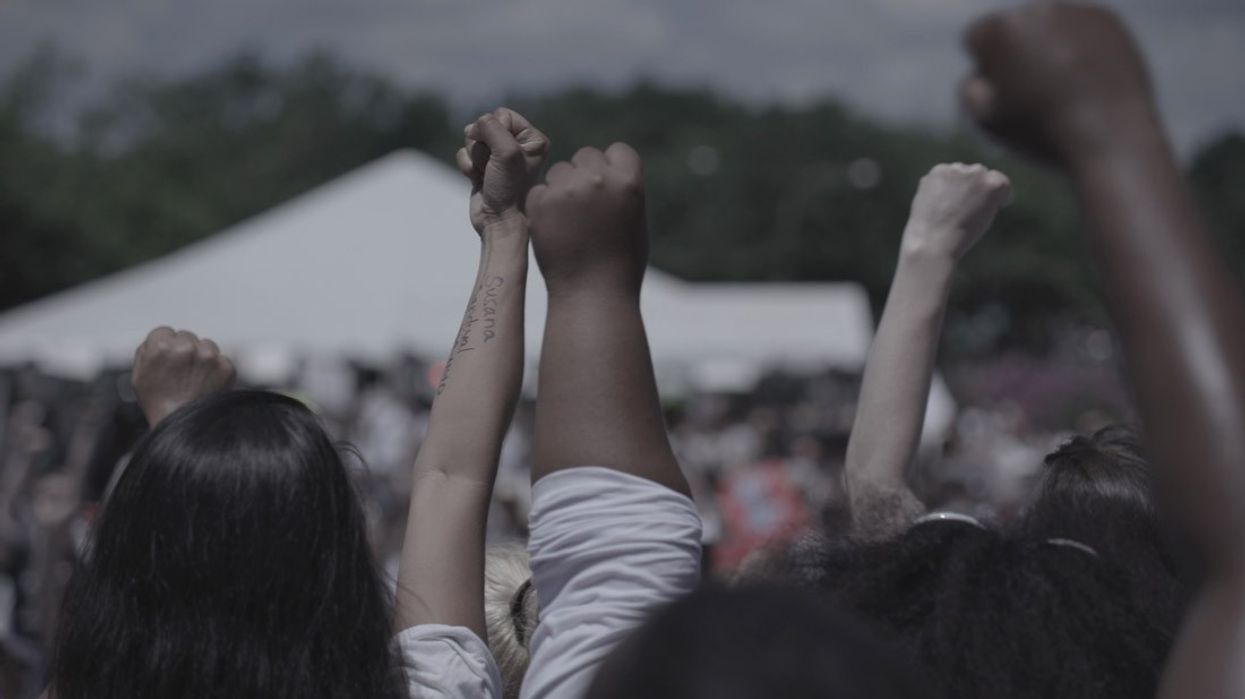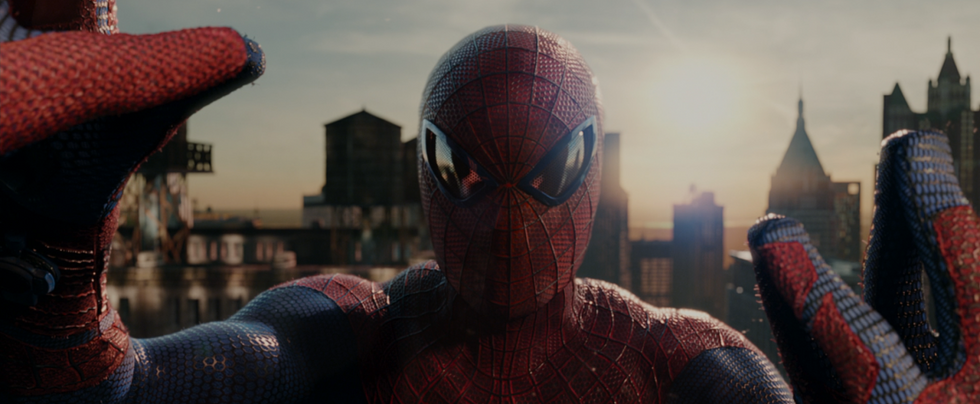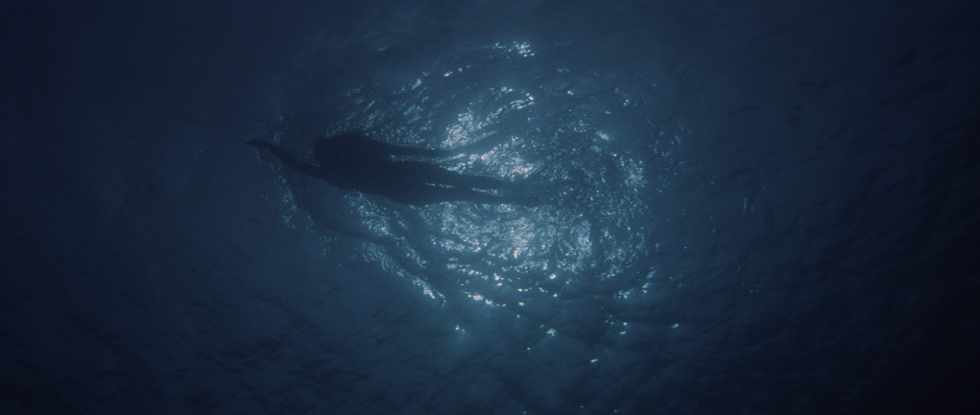Want to Be a Great Cinematographer? This Sundance DP Suggests You Learn to Edit
Thorsten Thielow has lensed some amazing documentaries, including his latest collaboration with Academy Award nominee Amy Berg premiering at Sundance 2019. His recipe for success? Starting as an editor.

Along with a plethora of shooters covering events across the nation, Thielow began following the phenomena of the Women’s Marches in 2017 with a Canon C300 and by choice, only a single lens, a 35mm Cine Prime. The resulting film, This Is Personal, chronicles the intersection of issues in the women’s movement, including nuanced portraits of recently controversial figures Tamika Mallory and Erika Andiola.
Before the premiere of the documentary at the 2019 Sundance Film Festival, Thielow sat down with No Film School to talk about the art of verite, getting his start in America with Kamera Kollektiv, and why being a great cinematographer is not about being a camera-holder but a storyteller in your own right.

NFS: You have some fantastic credits. How did you start as a DP and what got you to the point where you are now?
Thorsten: I dropped out of school when I was 16 because I always knew that I wanted to make movies. And I left my parent's home when I was 16 and started a job. Essentially, the person that took me on was a DP and because I wanted to become a DP, he said, "You have to become an editor first." So I became an editor, and edited for like seven, eight years exclusively. And then, slowly, a cinematographer in Germany named me as his assistant, and then I slowly thought of making documentaries. And I worked in France and then in Germany, in this sort of European television for a long time.
And then I met a girl and I married. We lived in Mexico together, and then Brazil, and then eventually moved to New York about six years ago. When I arrived here I had absolutely zero contacts. I met some people that are now part of the Kamera Kollektiv. When I met these people, they looked at my work, they liked it, and they started referring me directly to producers. And that's how I got a start in America, which was only six years ago. It’s very recent and it was a very stressful time. We arrived from Brazil with two young kids. And now I'm here, and I get to work with all these amazing people!
NFS: Looking back now, what was it about editing that helped to shape you as a cinematographer?
Thorsten: It's everything about it. It was such a formative time for me because, as an editor, you think about visuals and you think about storytelling and how to tell a story in a visual way. And you struggle with it all the time because you don't really get what you need. And then you start inventing things and coming up with ideas how to illustrate what you want to say. That helps me now a lot, that I think in themes and I think in storylines, and I'm often editing in my head or thinking about how to really be bold in the edit room. And so it helps me to really think as a storyteller and not just as a camera holder who gets five shots. Instead, I try to think of sequences and the story.

" If you come home with a documentary you set out to produce, you've made a big mistake."
NFS: When Amy Berg first approached you about This Is Personal, how did she describe what she wanted to capture?
Thorsten: That’s interesting now because Amy and I had been already working on a different project, on a full-hour HBO series called The Case Against Adnan Syed, which is based on this podcast by Sarah Koenig about this murder case in Baltimore. We had been working on this project for a long time, it's just quite different. There's very little verite in it, it’s very interview based, and the way we approached that was to be very cinematic. We used a lot of tools like the MOBI, the ALEXA mini, and the AMIRA, and we heavily stylized it. Amy knew exactly what she needs and would really direct it in a way where she would be part of the storytelling as it unfolds.
But when Amy started talking to me first about a month before the [2017] Women's March in Washington, she said to me, "I don't want this to be designed. I want this to be real verite, 100% observation. I want to be a fly on the wall. I don't want to have a big crew. I don't want to have any lights. I want a small camera. And I want to be very intimate with our subjects. I want to develop a relationship with them." And, of course, I immediately jumped on board. That's exactly what I do. That's my thinking, what I've been doing over the last more than 20 years. In true verite filmmaking, you really immerse yourself into a subject matter and become very close with your subjects. You almost become part of them and then become a fly on the wall. You never stop the action. It was amazing to learn to work with Amy in an entirely different way.
When Amy pitched the film to Paramount, I think there wasn't yet a clear idea, what exactly did we want to capture? It was post-victory of Donald Trump. Everybody was devastated. And Amy wanted to make a movie about women in this time. There was a lot of soul searching along the way. What is this film going to be? What film can we make? What film should we make? If you come home with a documentary you set out to produce, you've made a big mistake.
And I think this is what happened. We had sort of an idea what we wanted to make, and we came home with something entirely different. Nobody had imagined this was going to be the story. And that's exciting, right? Because along the way we got to meet all these amazing people and ended up really steering in on Erica and Tamika, and their two stories connect to the broader social political situation in America at the moment.

"...using a prime lens, the camera explores the scene in a completely different way."
NFS: Over the course of the project, there’s the Women’s Marches, where there's obviously a lot of people involved across the country. But you're also zeroing in behind-the-scenes of organizers like Erica and Tamika. Did you have a specific strategy for the best way to capture everything?
Thorsten: The strategy was to never stop rolling. Do not ever turn the camera off. And never step away from your subjects. The second we met with our subjects we would not stop rolling. They would very quickly come to understand that we would not go away. We will not go away for the private conversation with Tamika's son or with Erica's mom or boyfriend, where if they wanted just to release steam, we were still there. I think that really sort of sums it up. Of course, there were larger themes, and we had multiple shooters on multiple characters. But all these characters and all those shooters had a relationship, and the shooters had the same strategy, which was stay on your subject and follow whatever happens in front of you.
NFS: What did you shoot with, between camera and lenses, were you using so you could never stop rolling? And did every shooter use the same thing? Thorsten: There were a lot of shooters, and there were people involved who were not 100% real cinematographers. There were people that had connections, who were activists filming with their own cameras, oftentimes who came together at the last minute. So unfortunately, we didn’t have visually the coherence with the same camera system, the same lensing, or the same f-stop, any of that. There really were a lot of people involved, so that didn’t happen.
But my approach to the verite on this was that I wanted this to feel as real as possible. I wanted to have no discussion that points to the camera. That includes, for example, zooms. Everything I shot, and I tried to be consistent with the other shooters as much as possible, was on the 35mm Canon Cine Prime. I never used the zoom. When I needed a different shot, I moved in space. I explored the space but I never zoomed in just to get a different shot. That, to me, felt very immediate and real. So a Canon C300 was to a Canon 35mm Cine Prime mostly shot at an f/2.
NFS: That’s very interesting.
Thorsten: Then also one wireless lavalier microphone, and a couple of batteries, and that was it. It was oftentimes just me, no sound, Amy and I, and we would just hang out. And we would put a mic on whoever was most important or who was our subject. Of course, there were bigger scenes and larger happenings where we needed sound, and then the one-man-band idea didn't work. But a lot of it was just trying to be as small as we can and as real as we can.
NFS: Is that something that you've done before, shooting verite with just one prime lens?
Thorsten: I find it a very interesting approach. I just finished an entire feature, with Jesse Moss and his wife Amanda McBain, where we shot an entire feature in seven days in Texas. And we had seven cinematographers, and all of us, we all used the same lens and the same camera. And what I find really interesting about not using a zoom but using a prime lens is that the camera explores the scene in a completely different way. You can't just zoom in and get a different shot, you physically have to move. And while you move, you realize there's more angles to this. There's more interesting angles that connect things in a different way than just punching in and staying where you are. So the camera explores a lot more and I find that very, very interesting.
The prime is also obviously a lot faster than most zooms. And that, to me, gives it the visual coherency to shoot at the same f-stop, to shoot wider open, especially in situations where there's so much distraction in the shot, and you have absolutely no control over where people are, and what's happening. So with an f/2 you really can sort of make the walls go away, and focus on what's happening right in front of you. So I shoot a lot in this approach where I sort of limit myself to one lens and stick it out, and not use a zoom.

"...you can't just phone it in and get pretty shots. You have to be really present."
NFS: With the premiere coming up at Sundance so recently after 2019 March, which was surrounded by a lot of controversy this year, do you have any hopes for what audiences might come away with about the complexity of different ideologies going on within the movement?
Thorsten: Amy would answer this best, as I’m not as good with the bigger picture, but what attracts me watching this film is you see two amazing women fighting a fight that helps so many people and inspires so many people. And what Erica and Tamika are doing is taking their experience, folding it into a movement, and then helping communities organize themselves.
What I hope is that the message they have for people, but most specifically women, all over the world, is to get inspired by those two women and their stories and their fight. They're really amazing. If you watch the film, it's mind blowing to see how hard they work, and how frustrating it is even sometimes to get a tiny little bit of success, and move forward.
NFS: Considering where you are in your career now and with yet another film premiering at Sundance, what would your advice to be others, and in particular aspiring cinematographers?
Thorsten: What I often see is that younger people are so worried about the gear and how fancy the cameras are. And it's really not that important. What's important is to find a good story and capture that story, and not worry about the fancy camera equipment too much. I see that so often that the second you get on the phone with somebody, people ask you, "Oh, and I want to shoot it on this camera. And I want to shoot it on this lens." It's like, "No. Actually, let's talk about the story and about the people you're filming with." That's important for me.
The second important thing is that as a cinematographer, it is so important that you connect with the people you work with, with the subjects. You have to be in their world. You have to start a relationship with them, otherwise you will never get the access that gives you real insight into people's souls and what they're going through. I had to learn that over the years, that you can't just phone it in and get pretty shots. You have to be really present. You have to be there. You have to try to understand those people and become one with them.
For more, see our ongoing list of coverage of the coverage of the 2019 Sundance Film Festival.
No Film School's podcast and editorial coverage of the 2019 Sundance Film Festival is sponsored by RODE Microphones and Blackmagic Design.
Featured header image is a still from 'This Is Personal' premiering at the 2019 Sundance Film Festival and courtesy Disarming Films.


 'The Amazing Spider-Man' (2012)
'The Amazing Spider-Man' (2012) 'Jaws' (1975)
'Jaws' (1975)









